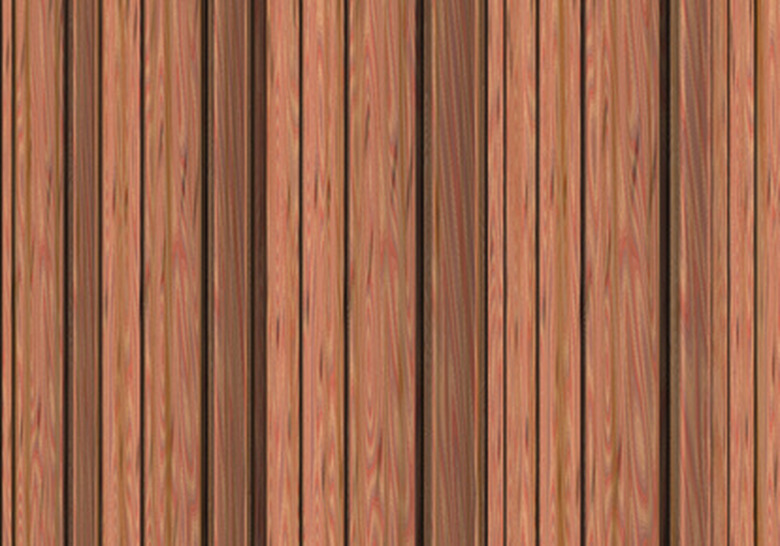How To Stain Fake Wood Paneling
Things Needed
-
Detergent
-
Sandpaper, sanding sponge or pole sander
-
Hammer
-
Wood putty
-
Drop cloths
-
Blue painters tape
-
Gel stain
-
Mineral spirits
-
Stain applicator
-
Rags
-
Varnish
Tip
Use a wood graining brush or comb (available at most good paint and craft stores) to create a faux grain effect with the gel stain. Fill nail holes with wood putty that matches the existing color of the fake wood paneling.
Warning
Gel stain is oil based, and has strong fumes. Open windows and use fans to dissipate the smell. If you can't ventilate the area adequately, wear a respirator. Dispose of oily rags by placing them in a bucket of water or outside until dry. Never put damp, oily stain rags in the trash or anywhere enclosed because they can spontaneously combust.
Fake wood paneling may evoke images of 1970s mobile homes, but some of it is very good quality. When it starts getting a bit worn around the edges, you can always paint it–but painting paneling is a lot of work. You can stain fake wood paneling instead, and bring it back to life with rich color and even some creative wood-graining. Gel stain is tailor-made for fake wood paneling. It coats and adheres to most materials, is thick enough to apply easily to vertical surfaces, and comes in a wide range of colors.
Step 1
Clean the paneling with a grease-cutting detergent (dish washing detergent works well) and rinse it, then let it dry. While you're washing, pay attention to nails in the paneling that are sticking out, and pound them back in.
Step 2
Sand the paneling with 120-grit sandpaper or a sanding sponge. If you have a lot of paneling to sand, a drywall sander on an extension pole will make the job go faster. Because gel stain coats instead of penetrating, the way traditional stains do, it won't adhere well when applied to a hard, shiny surface. Brush or vacuum away the sanding dust.
Step 3
Protect the floor along the base of the paneling with drop cloths. unless you are also staining the baseboards and wood trim, tape them with blue painters tape. Tape along the ceiling as well–applying stain is a messy job.
Step 4
Stir the stain in the can for at least 30 seconds to break up the gel colorant, then close the lid firmly and shake it vigorously for about another 30 seconds to mix it.
Step 5
Test the stain color on a piece of scrap material, or a hidden part of the paneling, to make sure it's the color you want. Most gel stains can be thinned with mineral spirits if you want a lighter or more transluscent effect. Check the label as thinning directions can vary between brands.
Step 6
Apply the stain liberally using a foam applicator, natural-bristle brush or lint-free rag. Work in sections using grooves or breaks in the paneling as your guide. Wait several minutes, then wipe off the excess, working with the grain of the fake wood, with a dry rag. Turn it frequently and buff until the stain looks even.
Step 7
Wait 6 to 8 hours to apply another coat, if you want it to be darker or have more depth.
Step 8
Protect the paneling with at least one coat of protective clear finish, such as polyurethane or acrylic (water-based) varnish. Allow the stain to dry for at least 24 hours before finishing.
